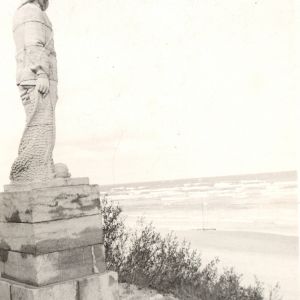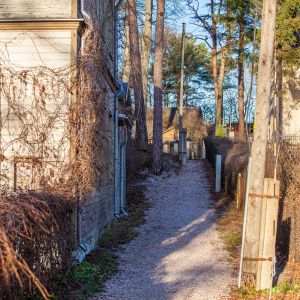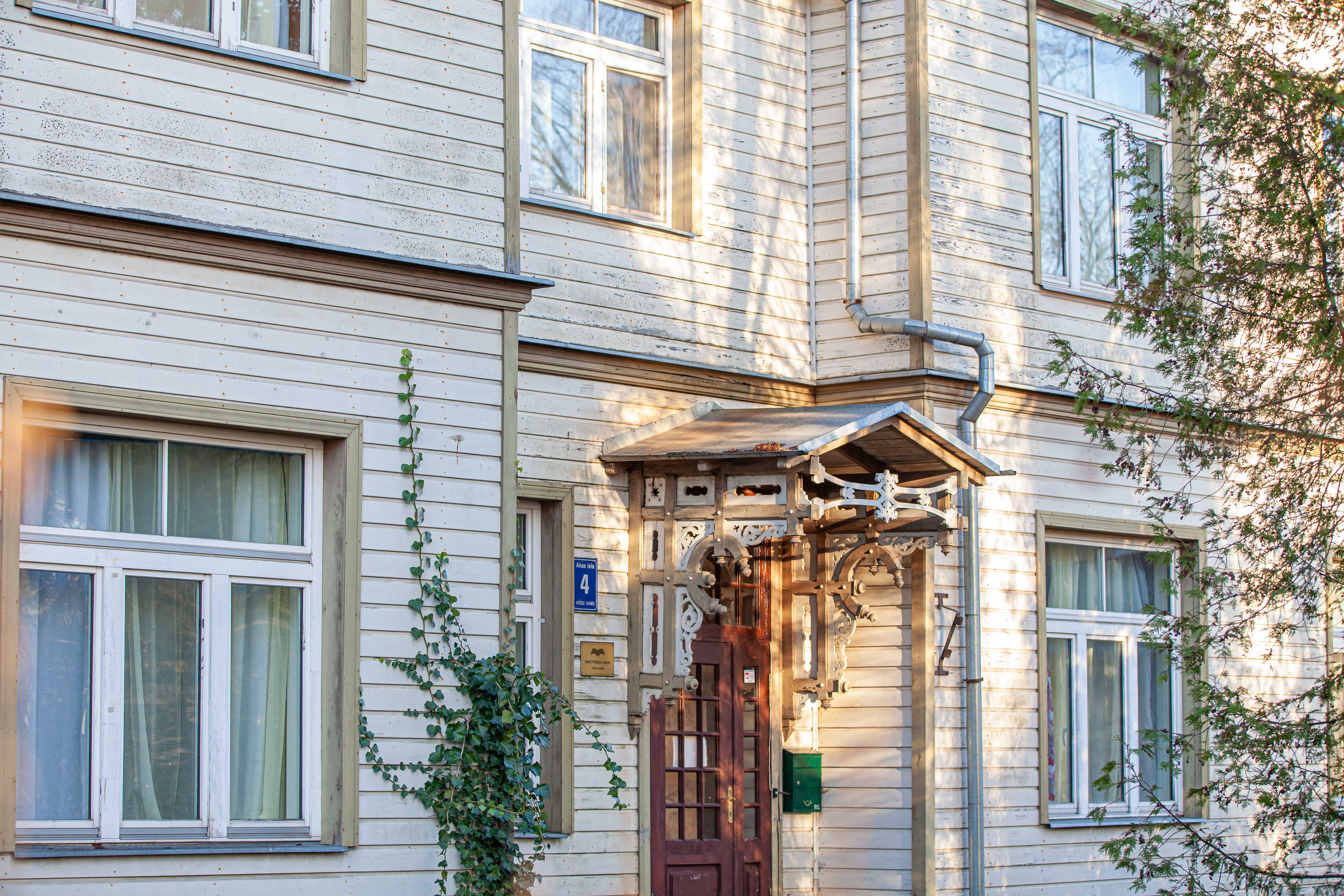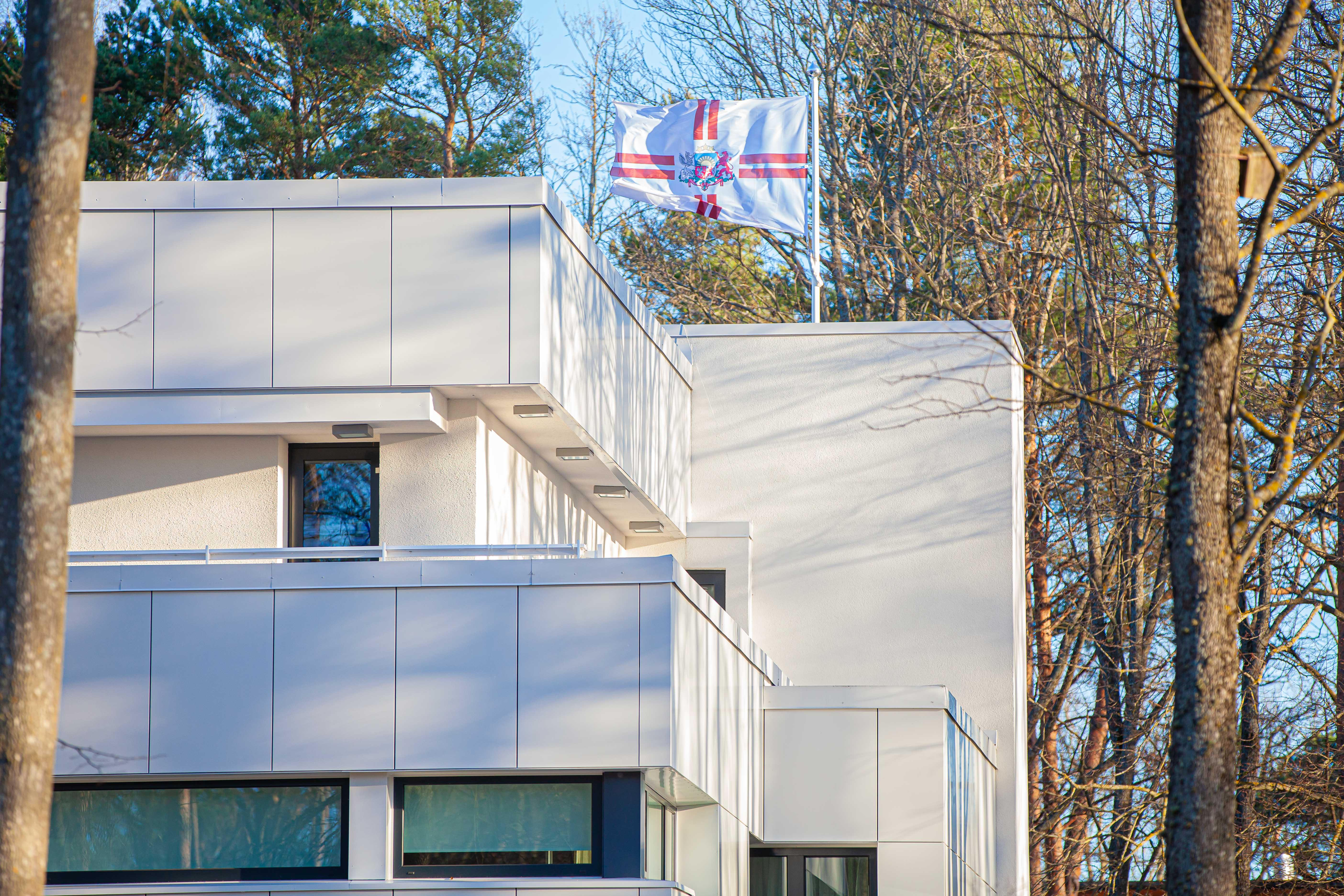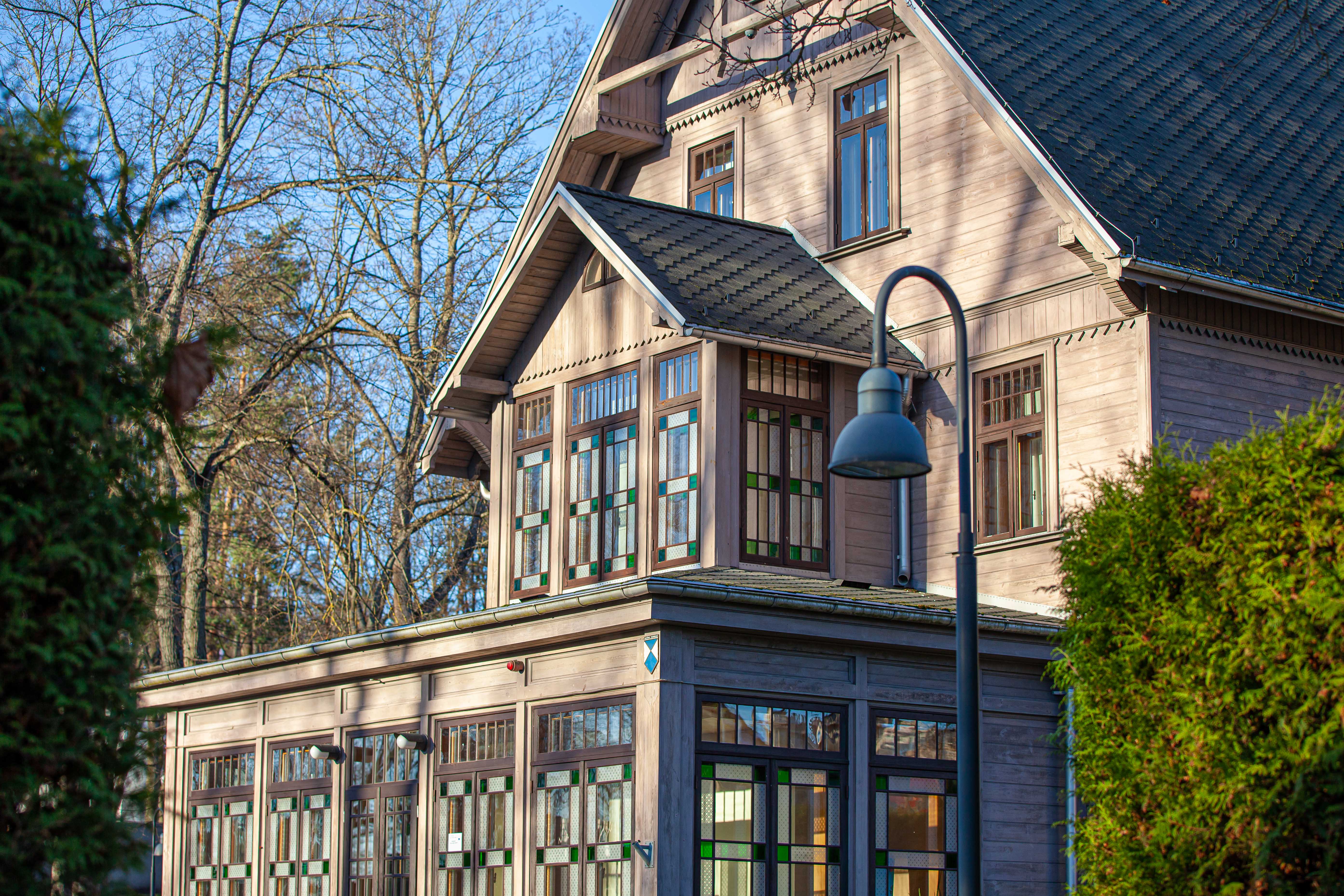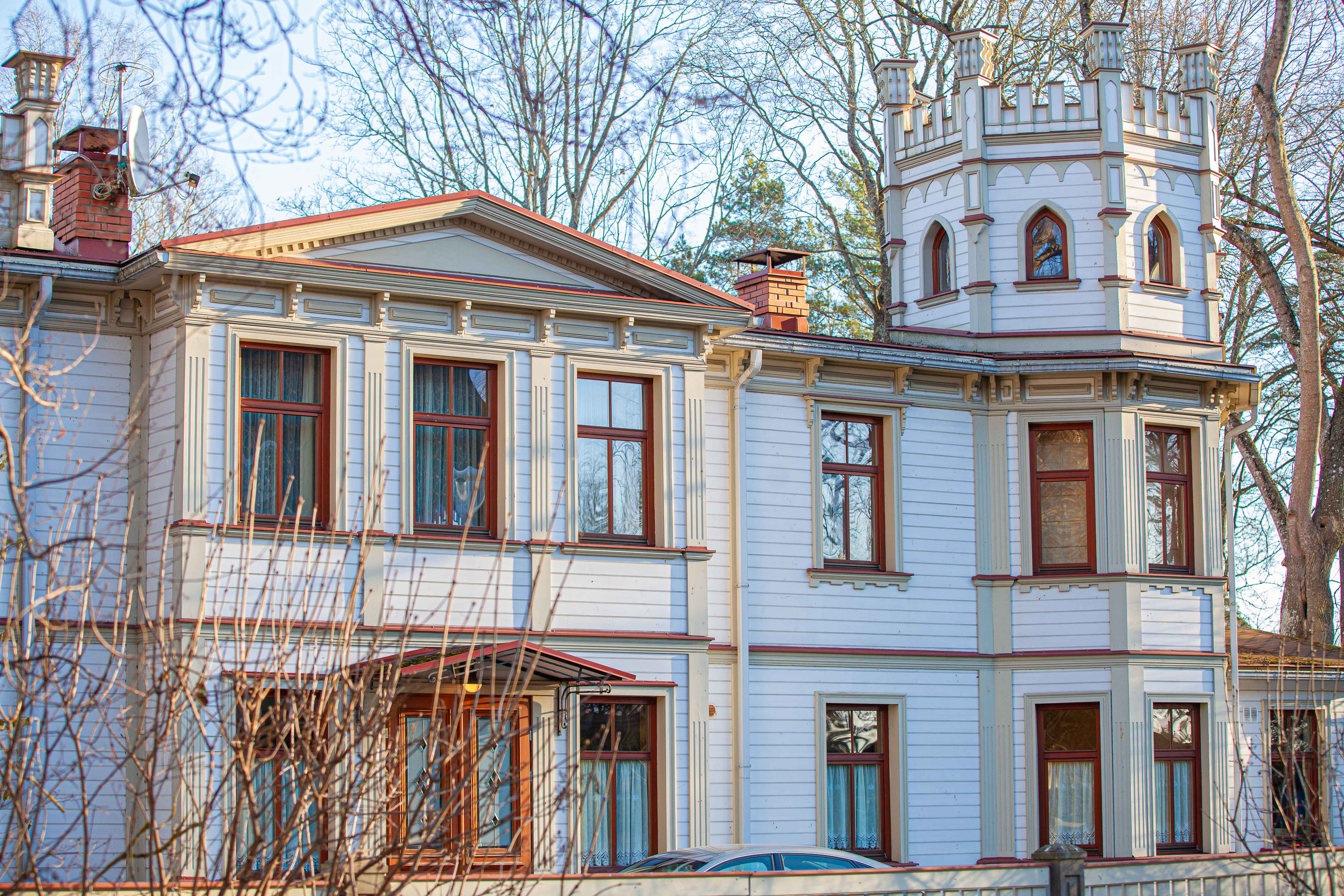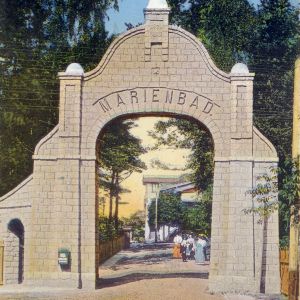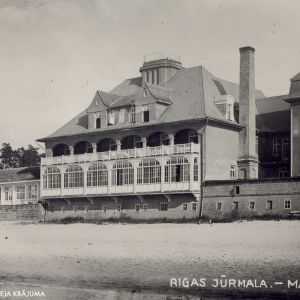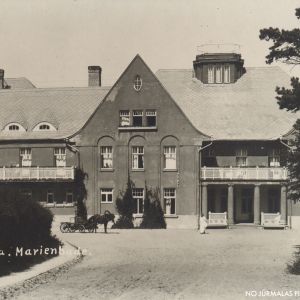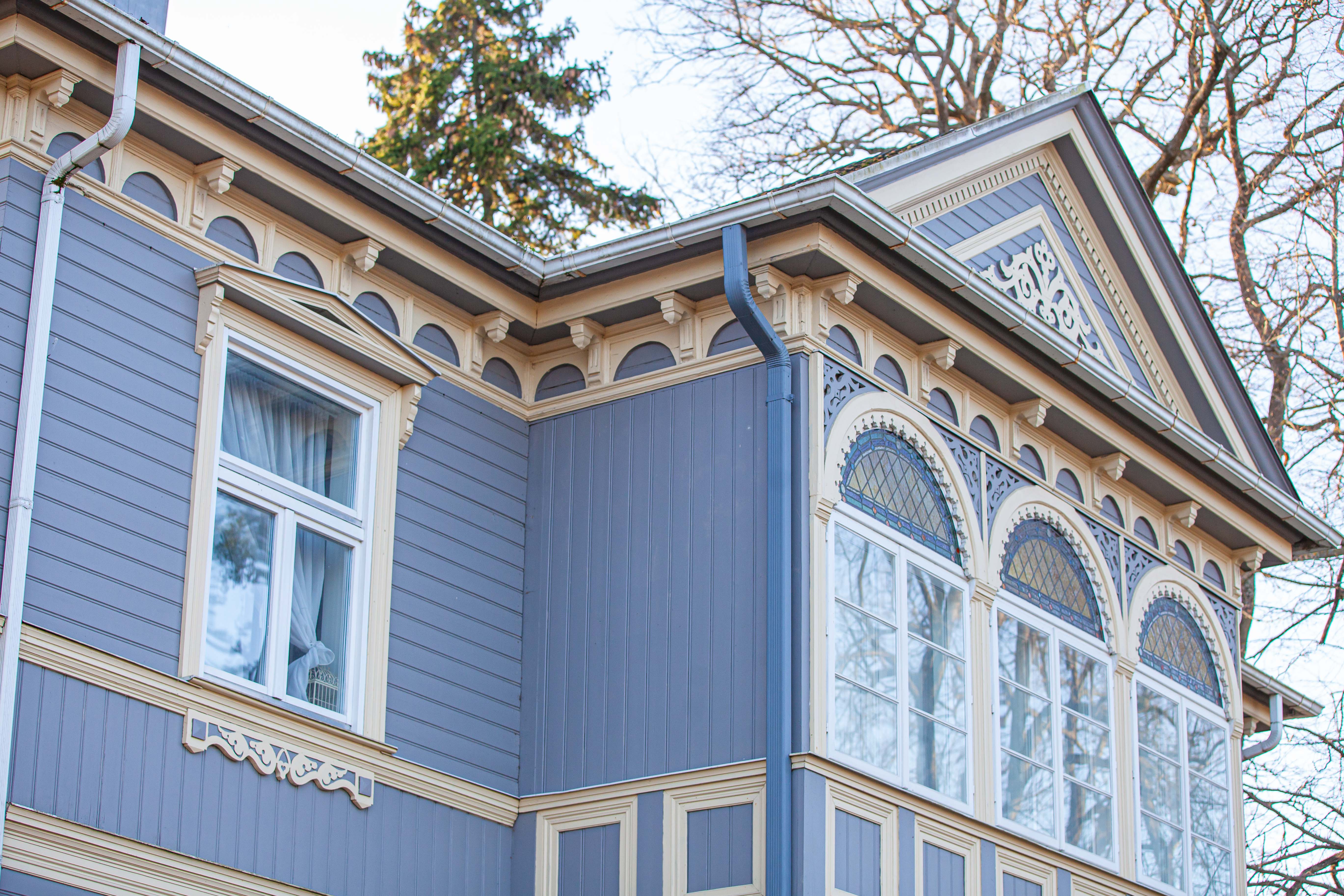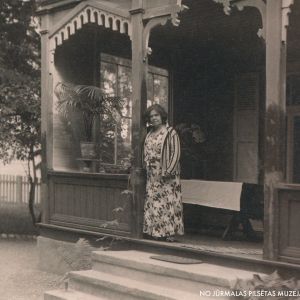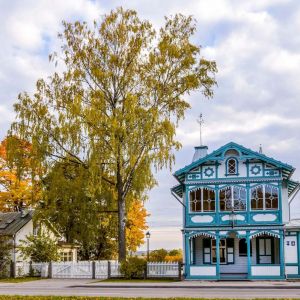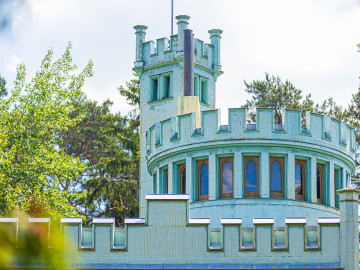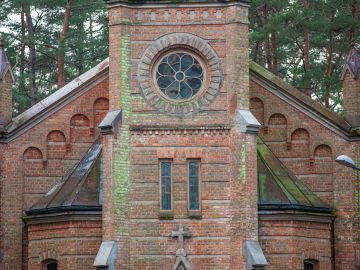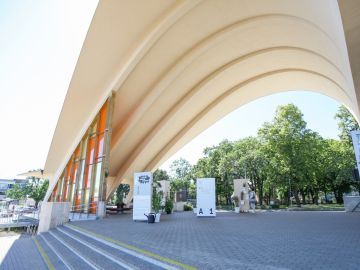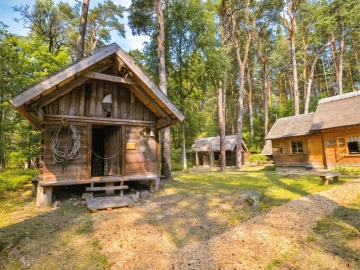Dubulti. The centre of creative intelligentsia and aristocracy
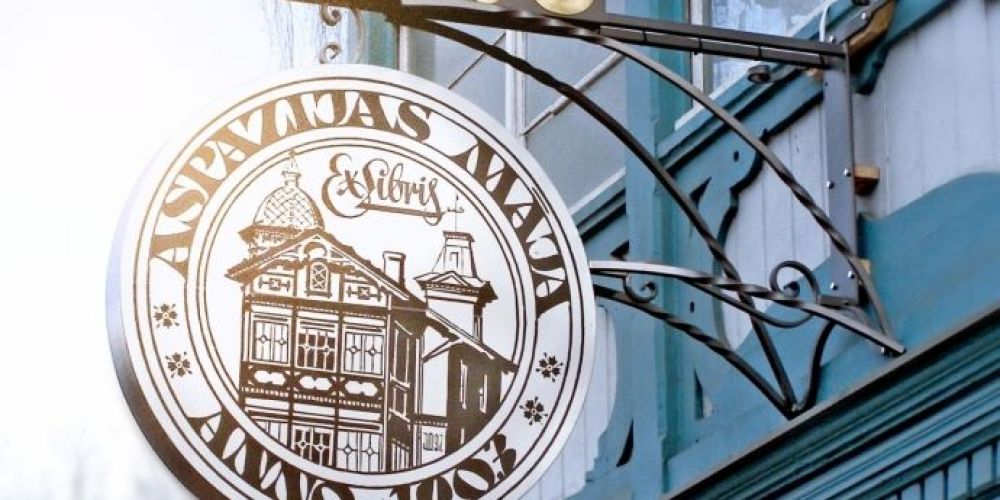
Dubulti is a part of the Jūrmala city and its historical centre. The name of Dubulti comes from a farmer named Dubults, who once lived and kept a tavern here. Later, after a series of variations – Duppeln, Dubbelzeem, Dubbel, Dubbelt, Dubbeln – it finally became Dubulti. After the War of 1812, Dubulti earned more attention from holidaymakers, including officers of the Russian army as well as Barclay de Tolly, who was among the first to build a summer cottage in this town. When the first guests arrived in Dubulti for a holiday swim, only a couple of poor fishermen's houses stood here. Fishermen rented the houses out to holidaymakers and moved into nearby buildings or temporarily moved up to the attic. In 1837 the first tavern was built in Dubulti, consisting of guest rooms, a ballroom for 300 people, a dining room, and a pastry shop. Concerts, parties, and masked balls were organized here. However, 1848 became a turning point in the history of Dubulti: it marked the opening of a bathhouse that was the envy of every resort town in Europe. In the 1840s steamboat traffic between Rīga and Jūrmala began developing and the number of holidaymakers in Dubulti increased by the day. In 1857 over 4000 guests were staying in Dubulti over the summer. To ensure order and comfort for every guest, the dune leading to the sea could be crossed only at set times. The rest of the time was reserved for men's and women's bathing sessions by turns. Wood and straw huts lined the coast for guests to change in. In 1872 Dubulti was the most elegant and popular bathing place on the Vidzeme–Kurzeme coast, and many members of high society came here for a holiday. The cultural history of Dubulti has been forming for over 200 years. The town has always hosted an active concert life and since the 1860s Dubulti has also been a popular place for literary figures to live, holiday and write. The architecture of Dubulti is stylistically and functionally diverse. It offers over 70 monuments of architecture, art, and history.
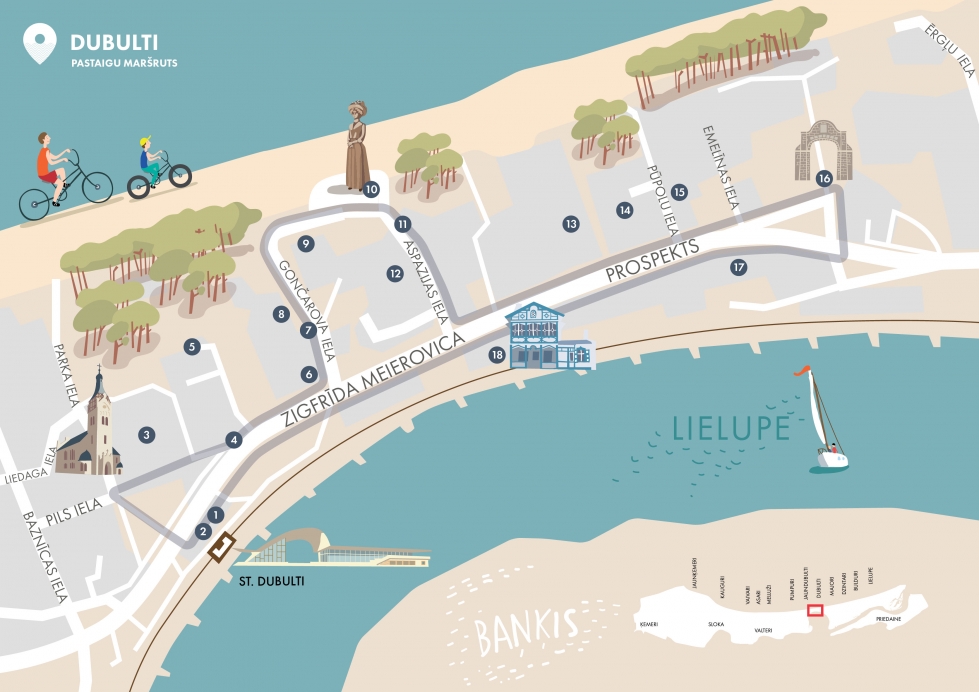
1. Dubulti railway station
In 1877 as the railway line Rīga–Tukums was opened, the “Dubbeln” (renamed Dubulti in 1919) station was opened for holidaymakers. Freight wagons were attached to trains to carry baskets, furniture belonging to holidaymakers, animals. There was an insufficient place for passengers, therefore ten or even more cars were added to trains so that platforms turned out to be too short. The two-story building was the largest wooden station on Rīga–Tukums railway line. The station had waiting areas, a telegraph office, a train ticket office, and premises for a summer restaurant, along with living quarters of the station's employees, a luggage storage room, and a news stand. In 1977 a new station building was constructed at the location of the old wooden building. The new station building was designed at the Leningrad Institute of Railway Engineers and it stands still today. The building was designed by architect Igor Yavein (1903–1980), according to whose designs over 100 railway stations have been built. The form of the building is reminiscent of a wave of the sea. In 2015 on the premises of the station besides ticket offices, an exhibition hall of contemporary art – Art Station Dubulti was created. Those who wait for the train at the station have an excellent opportunity to spend their time enjoying art, which is a unique solution in Europe. The exhibition hall is open every day, entrance – free of charge
2. A view on the Lielupe from the railway station
Here the Lielupe takes a sharp bend to the north, coming as close to the beach of the Gulf of Riga as approximately 300 meters only. The opening of a railroad route in 1877 gave rise to new opportunities in goods and passenger transportation, however, until the beginning of the 20th century a ride on a steamship cost only a fifth of the price of a railway ticket.
3. Dubulti square
In 1848 Dubultu spa house with a concert hall, a restaurant, and a billiards hall was built here. In 1877 the building burned down and a new spa house was built here with additional buildings and a larger concert garden. The monumental volume of the building, which was reminiscent of a palace, was designed by the architect of Rīga city Johann Daniel Felsko. Dubultu spa house was the largest and most splendid kursaal in the Baltic states. An open-air concert garden was built by its side, surrounded by four additional buildings for better acoustics – “Bellevue”, “Ellysium”, “Hermitage”, “La Trappe”. For 35 years the spa house was the center of the public life of the local fine society and the bathing guests. During the bathing season, the orchestra performed concerts twice a day. Summer concerts were very popular. To keep up with the Horn's Garden in Majori, the concert garden of Dubultu spa house offered free tickets to those guests, who purchased railway tickets from Rīga to Dubulti and back to Rīga on working day evenings. In 1895 a new musical pavilion with a glass wall was built, where famous orchestras performed, however, the centre of the musical life gradually shifted to Majori and Dzintari, where the new Edinburgas spa house began offering concerts. To attract more guests Dubultu spa house organized wonderful garden feasts with thousands of lights, theatre and operetta performances, Swedish breakfast, fireworks, light shows, balls and free concerts in the park. In the 1930s Rīgas Jūrmalas City Grammar School, later Secondary School operated in the spa house. In the 1970s the historical building was demolished and on 22 April 1977 a monument to V. I. Lenin (author – J.Maurins (J.Mauriņš), architect – K.Alksnis (K.Alksnis)) the largest in the Baltic states and the third largest in the USSR – its height was 4,5 m - was erected. In Soviet times national holiday events, parades were held here. In the 1990s the monument was demolished.
4. Zigfrīda Meierovica prospekts
Historical names: Marienbādes iela, Gončarova iela, Zigfrīda Meierovica prospekts, Ļeņina prospekts.
The street is named after the outstanding Latvian politician Zigfrīds Anna Meierovics (1887-1925), who lived in a cottage on this street for several years with his second wife Kristīne Bahmane. The building has not been preserved to this day.
Zigfrīds Anna Meierovics was the first Minister of Foreign Affairs of Latvia and the second Prime Minister of the Republic of Latvia. He was also the one to secure international de facto and de iure recognition of the Republic of Latvia. Meierovics' government saw the introduction of the new currency of the Latvian lats, the agreement with Russia on the procedure of choosing one's citizenship, and switching to the Latin script.
The second name Anna was given to Meierovics in honor of his mother, who died shortly after giving birth. His wife Kristīne Bahmane is known as the first woman to win the right to participate in the Rīga Stock Exchange and create the first private aircraft building company in Latvia. Sadly, Zigfrīds Anna Meierovics died in a car accident on 22 August 1925, at the age of 38. To honor his memory, it was decided to stop all events of entertainment until his funeral on 27 August and to stop the movement of transport on the streets of Rīga and close all government institutions earlier on the funeral day. Zigfrīds Anna Meierovics was buried in the Rīga Forest Cemetery and a special monument was set up for him there.
5. Meierovica prospekts 1, lit.1
A local monument of architecture. This building was constructed in the 1930s, in the style of romanticism with elements of the Swiss house or Alpine chalet. It was constructed for the “Latvijas raugs” factory owner Žanis Celms (1885–1977).
Žanis Celms was an entrepreneur and owner of the “Latvijas raugs” factory and several rental buildings in Rīga. He was a warm-hearted man and had several foster children. In 1944 Žanis Celms left for Germany with his wife Angelīna and two foster children, hoping to soon return home, but unfortunately, his dream did not come true. In 1977 he bequeathed the house to his foster daughter, who still owns it to this day.
6. Z. Meierovica prospekts 5
This Functionalism-style building was constructed in 1936. It was the home of the Ozoliņi family of doctors, constructed for the doctor and dermatologist Alfrēds Ozoliņš. It is currently the family home for one of his four sons, politician, and doctor Leopolds Ozoliņš. Leopolds Ozoliņš (1937 – 2021) was a recurrent member of Latvia's Parliament and the Jūrmala City Council as well as a doctor. For most of his life, he worked in the Latvian Research and Development Institute of Traumatology and Orthopaedics, where he carried out complicated and innovative surgeries and served as an aviation burn surgeon. He also invented several remedies: “Comsi”, “Avepin” and “Amicos”.
7. Kastaņolas iela
The historical name of this street is Admirāļu iela. It was later renamed in honor of the Russian writer Ivan Goncharov (1812–1891), who had fallen in love with Dubulti and spent several summers here. From the age of 67 Goncharov used to come to Dubulti every year and rent a cottage on Blaumaņa iela (then called Kungu iela). He lived together with the three children of his late servant Karls Treiguts, who came from the Latvian region of Kurzeme. Goncharov taught them to read and write. Goncharov, who rapidly gained popularity in Dubulti and is the author of the novel “Oblomov”, spent nine seasons here and became the star of the town: he was invited to every social event and concert. Although he complained more than once about the wet weather, uncomfortable cottages, boredom, noise from roosters and musicians, and separate bathing times for men and women, Goncharov visited Jūrmala several years in a row.
In May 2025, the street was renamed Kastaņolas Street to commemorate the exile years of Rainis and Aspazija in Switzerland and to mark the 160th anniversary of both poets. The initiative came from the Swiss Ambassador to Latvia, Martin Michelet, who proposed naming a street in Jūrmala to reflect the poets’ connection to Switzerland.
Kastaņola, located by Lake Lugano in Switzerland, was a place of refuge for Rainis and Aspazija from 1906 to 1920. These two prominent Latvian literary figures, whose works played a key role in shaping the country's national identity and cultural awakening, spent some of their most creative years in exile there. Rainis considered Switzerland his second homeland, and both poets produced many of their major works during this period.
8. Kastaņolas iela 8/10
The building was constructed in 1936 according to the project by Eižens Laube as the family home of the chemist and politician Miķelis Bruzis. This Classicism-style building is an architectural monument of local importance. Up until 1909 Miķelis Bružis (also known as Bruža; 1868–1941) worked in factories in Turkmenistan and served as the head of a public club in Shymkent. In 1913 he was one of the candidates in the Riga city election. Bružis was the head of the Riga Latvian Society Knowledge Commission and participated in several other societies as well. In November 1918 he participated in the proclamation of the Republic of Latvia as a member of the People's Council. In later years he was the head of the Mortgage Bank of Latvia. In 1941 he was deported to Russia, where he died in the Usollag Corrective Labor Camp. The building was later incorporated into the adjacent Writers' House complex. After the post-Soviet recovery of inherited real estate in the 90s, the building has changed owners.
9. Zigfrīda Meierovica prospekts 9, former Writers' House
Former wing of Writers' House. The Creativity and Recreation House of the USSR Literary Fund was founded in 1964. The complex consisted of several cottages and one multi-storey building with medical procedure rooms and a canteen on the ground floor. In the Soviet years Jūrmala was a favourite destination for poets, writers, and musicians. During summers, the Dubulti district became the capital of the Soviet creative intelligentsia.
From 1950s to 1980s Dubulti served as a place to rest and work not only for the local intelligentsia but also many well-known Russian writers: Konstantin Paustovsky, Venjamin Kaverin, Valentin Kataev, Alexei Arbuzov, Andrei Voznesensky, Robert Rozhdestvensky, Bulat Okudzhava, Nikolai Zadornov, Anatoly Pristavkin. It was here, in the Creativity and Recreation House, that the young and talented Latvian poet Klāvs Elsbergs died under very mysterious circumstances.
Currently, writers have access to a small wooden building on Aspazijas iela 4, but the rest of the buildings are privately owned with apartment houses taking up most of the territory.
10. Sculpture “Aspazija in the Dunes”
Sculpture “Aspazija in the Dunes”, dedicated to the outstanding Latvian poetess and playwright Aspazija, is located in a spot overlooking the sea, near the house where the poetess spent the last ten years of her life. The sculpture was created by a sculptor and resident of Jūrmala Olga Šilova. In this bronze piece, she chose to depict Aspazija's bright personality, outstanding talent, youth, and noble beauty. The cat standing by Aspazija's feet symbolizes the poetess' special love for these pets, of which she had 10.
11. Aspazijas iela
The narrowest street of Jūrmala. The historical name of this street is Akas iela (Well street), as there used to be a city well at its end, in the dunes. In Soviet times a sculpture called “The Fisherman” stood by the dunes — it was later destroyed and buried in sand during a storm.
12. Aspazijas iela 4, guest house “Rakstnieku nams”
Guest house “Rakstnieku nams”. This guest house in Dubulti is the oldest writers' residence in entire Latvia. It is located on the site of the former wooden building of the Dubulti House of Creativity, where writers from all of the USSR used to write and have a rest, next to the path, where the famous Latvian poetess Aspazija used to go on her daily strolls along the sea.
The guest house belongs to the Latvian Writers' Union. Writers can stay in the house for one month if they apply for and are granted the funds by the State Culture Capital Fund. Priority is given to applications from members of the Latvian Writers' Union. After finishing the project, the writer must submit a report on the completed work. It is also possible to have a paid stay at the house, by covering the expenses independently. Members of writers' unions and other creative organizations are given large discounts.
13. Zigfrīda Meierovica prospekts 31, the Jūrmala residence of the President of the Republic of Latvia
The building was constructed in 1971 as the residence for the Council of Ministers of the USSR. The building was designed by architect Valērijs Kadirkovs (1939-1989), who was also the author of designs for the Riga Congress House, Hotel “Rīdzene”, sanatorium “Jaunķemeri”, Hotel “Latvija”, the “Gaiļezers” hospital complex, and Radio and Television Center in Zaķusala. People sometimes call it the Kosigin's cottage because Alexei Kosigin, chairman of the Council of Ministers of the USSR, often visited the cottage in Soviet times.
In 1993 the building became the Jūrmala residence of the President of Latvia. This is not simply a spacious, luxurious residence. It is here that the President of Latvia continues to perform his official duties from. The building itself as well as its interior design demonstrate the complete image, culture, and era of the country as a whole.
14. Zigfrīda Meierovica prospekts 35, lit.1 (combined with Z. Meierovica prospekts 33)
A local monument of architecture. This wooden building was constructed in 1914 as a three-storey boarding house with balconies. The verandas were added to the building in 1922 by the owner of the house Mihails Čulkovs, a respectable lawyer and notary and also one of the members of the curatory of the Dubulti Gymnasium. From 2004 to 2006 the new owner of the building renovated the house by reassembling the old construction, installing a new fundament, and building a new carcass. Inter-storey cornices, as well as console detailing, profile boards in balcony railings, window shutters and casements were reconstructed, and stained-glass windows preserved. The territory was joined with the land plot of Zigfrīda Meierovica 33, consisting of a historical house, which once belonged to the family of Kārlis Kristaps Stricks. Kārlis Kristaps Strickis (Christian Carl Christoph Stritzky, 1842-1920) was a Baltic German entrepreneur, beer and porter brewery and malt factory owner. He was born in 1842 in Rīga. In 1867 he married the daughter of spirit factory owner Ādolfs Volfšmits (Wolfschmidt) and purchased a brewery on the land of Šarlotentāle Manor (Šarlotes iela, Rīga). In 1876 his father was given a title and allowed to use the surname "von Strickis". In 1913 his brewery called Bier- u. Porter-Brauerei C. Stritzky took fifth place according to volume of production in the Russian Empire. Kārlis Kristaps von Strickis had eight children. On his silver wedding anniversary, K. K. von Strickis presented the Dubulti Lutheran Church with an altar painting portraying Luther, as well as 48 wooden benches with trefoil ornament.
15. Pūpolu iela 3
A local monument of architecture. This Neo-Gothic style building was constructed at the beginning of the 20th century. The original buildings were demolished and built anew. The current building is a reconstructed copy of the original with preserved elements of architecture.
16. Zigfrīda Meierovica prospekts 43, previously entry gates of sanatorium “Marienbāde”
Architectural monument of local importance built at the beginning of the 20th century. This medical building was built in 1870 and was the first such establishment in Jūrmala. Only the gates and the gallery facing the seacoast have been preserved to this day. The name “Marienbāde” was created in honour of the wife of the Russian Emperor Alexander II, Maria.
At the end of the 19th century, the development of the resort city of Jūrmala was greatly advanced by the doctor Johans Kristiāns Nordštrēms (1817–1885), who started using elements of climate therapy, such as walks along the beach, physical activities in fresh air and bathing in tubs of seawater, to treat his patients. He cured his patients with a hardening physical therapy: they chopped wood, took long walks along the beach, and swam in the sea. Weaker patients were prescribed seawater baths, which they had fill with seawater themselves. After seeing the tired patients, the locals allegedly exclaimed: “It's not a sanatorium, it's a prison.”
After the death of J. K. Nordštrēms, the sanatorium passed to doctor Georgs Kitels (1857-1907), and was purchased in 1908 by Teodors Oskars Betichers (1869–1932). The first building burned down, and a new brick building was designed by the architect Vilhelms Bokslafs and constructed in 1905. Doctor Betichers modernized the bathhouse, installed electric lighting, and bought new medical equipment. In 1926 a gallery and a tower were designed by the architect Heinrihs Pīrangs and added to the building.
The sanatorium took in patients with nervous disorders, rheumatoid, breathing, or gastrointestinal diseases as well as those who simply needed extensive rest.
During World War II the sanatorium complex was almost entirely destroyed. Of the pre-war buildings, only the later-added constructions of 1926 remained, including the gallery and the corner tower, as well as the early 20 century entry gates. In 1960 it housed the branch of the “Rīgas Jūrmala” sanatorium and later the Baltic Fleet sanatorium “Majori”. During this time, new wings were built for the sanatorium: a club and canteen, as well as a modernized pool. Currently the former sanatorium complex is privately owned.
17. Zigfrīda Meierovica prospekts 38
The building was constructed in 1925 by the project of architect Gvido Berči. A national monument of architecture. The glazed veranda and currently glazed upstairs loggia are crowned by a decorative accentuated pediment. Semi-circular carved arches stretch between the pilasters of the loggia. The architecture of the building shows the influence of historicism on the early 20 century construction. The building is made even more expressive by a rhizolite formed from mezzanines. Presently the building is a privately owned.
18. Zigfrīda Meierovica prospekts 20, House of Aspazija
The museum is free of charge, with audio guides in five languages or group tours available for an additional fee. Open: Tue.- Sat.: 10:00–17:00 (10:00–18:00 during the summer season). The two-storey building was constructed in 1903 and currently is a historical and architectural monument of national importance. The facade of the building is richly decorated with applique carvings. This building is connected with the adjacent one on Zigfrīda Meierovica prospekts 18, which was built in mid-19 century and features a separately built kitchen with a reconstructed interior.
In 1933, the poetess Aspazija (real name Elza Rozenberga-Pliekšāne) sold her Riga house on Baznīcas iela 30 and bought a house in Jūrmala. The residents of Dubulti were delighted and there was even some thought about calling the main street Aspazijas iela. This was the house where the poetess spent the last ten years of her life – from 1933 until 1943 and experienced the change of political power and the Second World War. The brightest and most significant events of her life are connected to Jūrmala.
Until 1987 the house was at the disposal of Executive Committee of the Summer House Trust of Jūrmala City, and it was rented to many families at the same time as a summer house. In 1996 the house of Aspazija was opened to visitors as the poetess' memorial site and a branch of the city museum.
The exposition of museum's historical interior reveals the atmosphere of a creative living space in the 1930s. The interior features simple upholstery furniture, a piano and furniture with elements of art nouveau. It reflects the poetess' working environment. During her life, some of the most prominent Latvian cultural figures of the time visited her here: Veronika Strēlerte, Andrejs Johansons, Antons and Pēteris Birkerts, Kārlis Skalbe, Zenta Mauriņa. The historical exposition also contains some of Aspazija's personal things, such as works of art and books.
In 2009, in the presence of the then President of Latvia, Valdis Zatlers, the first monument dedicated to Aspazija was unveiled next to her house to honour the memory of the poetess, who was also a recipient of the Order of the Three Stars, winner of the Fatherland award and an immense influence on the 20th century literary scene and Jūrmala as a whole. The author of the monument is the sculptor Arta Dumpe, who portrayed the poetess not as a figure of glory but swathed in heavy clothes and contemplating life with her beloved cat by her side.
From 2012 until 2014 the House of Aspazija underwent a renovation. The projected holograms and interactive games in the museum help bring the spirit of a bygone era to life.
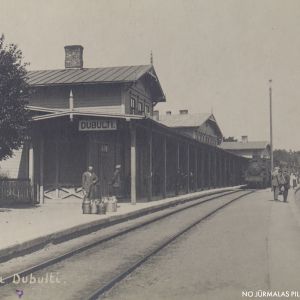
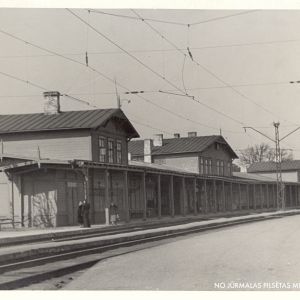
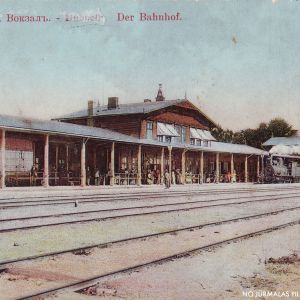
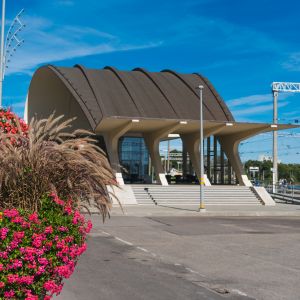
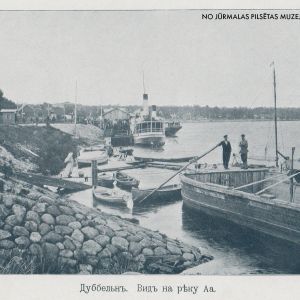
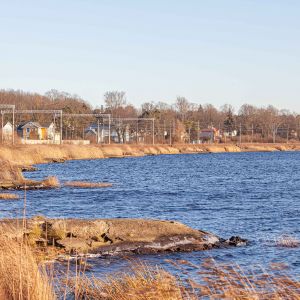
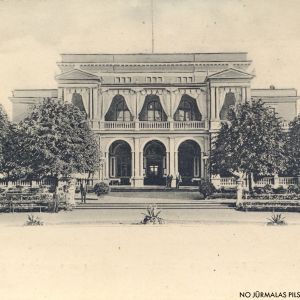
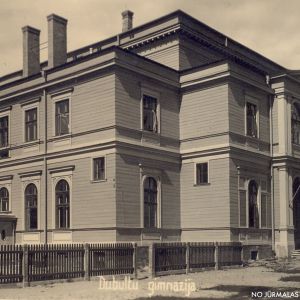
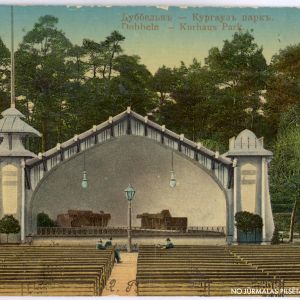
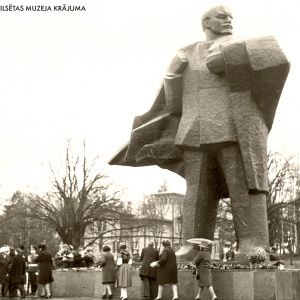
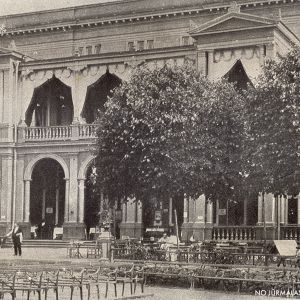
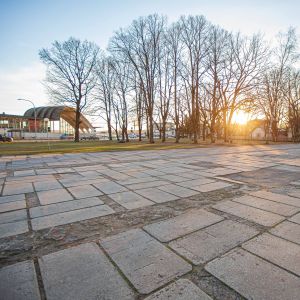
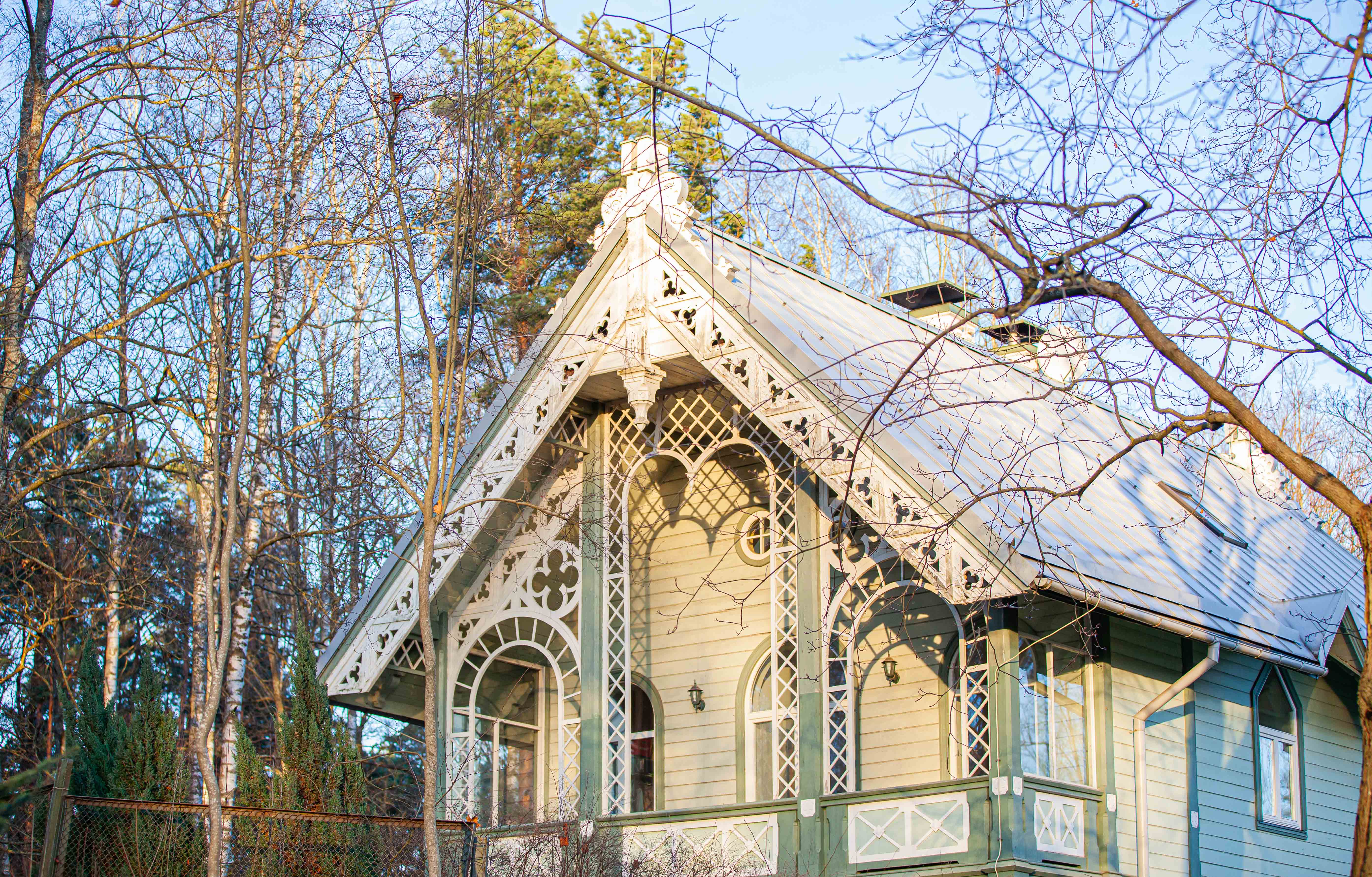
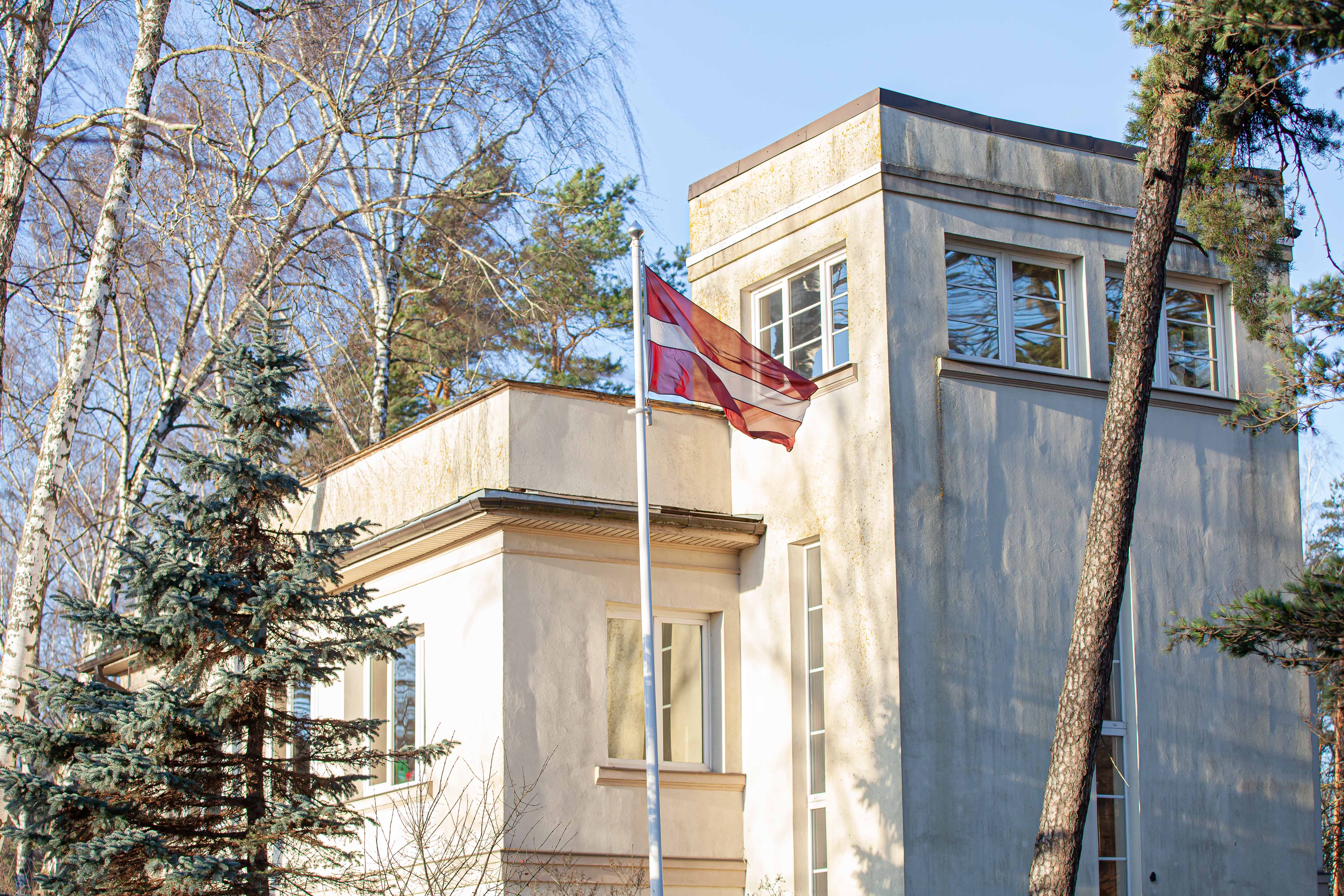
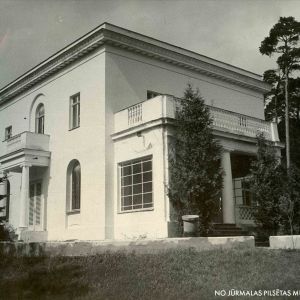
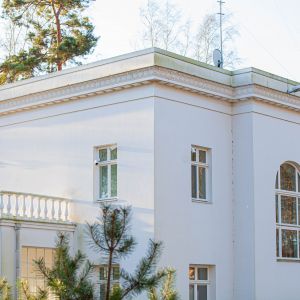
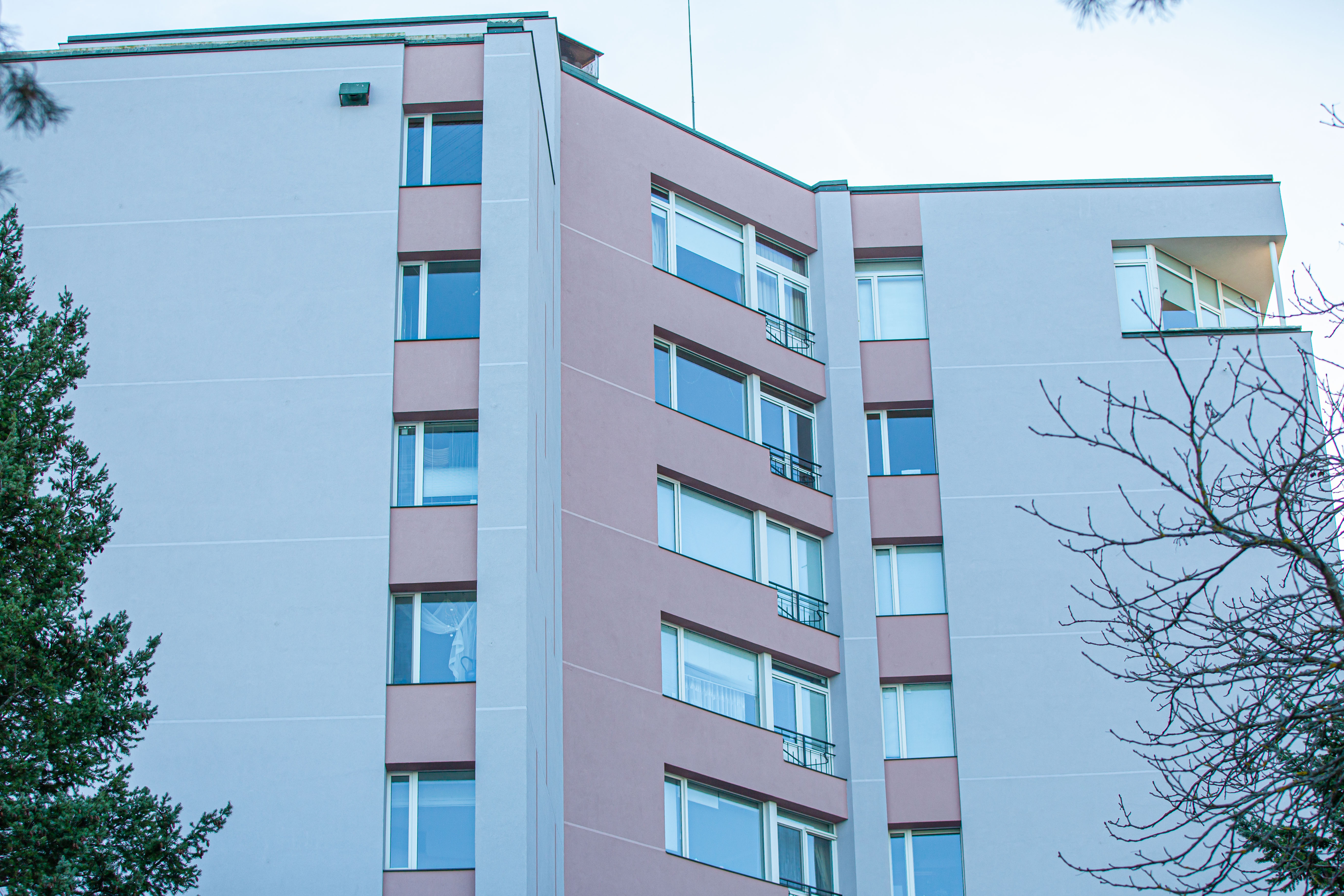
.JPG)
